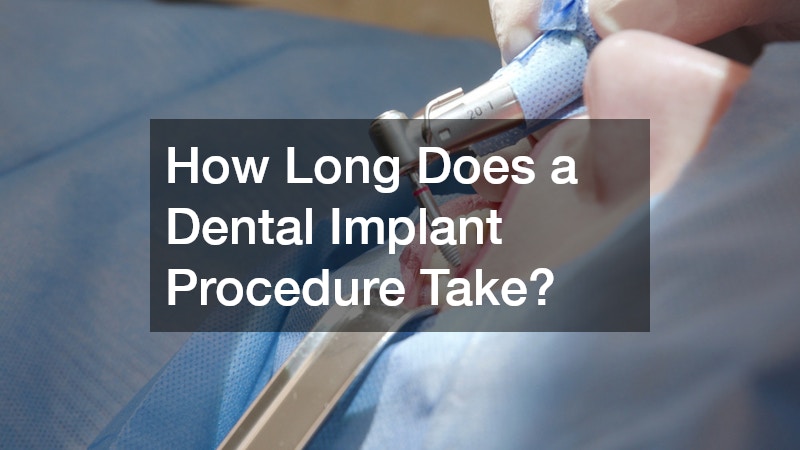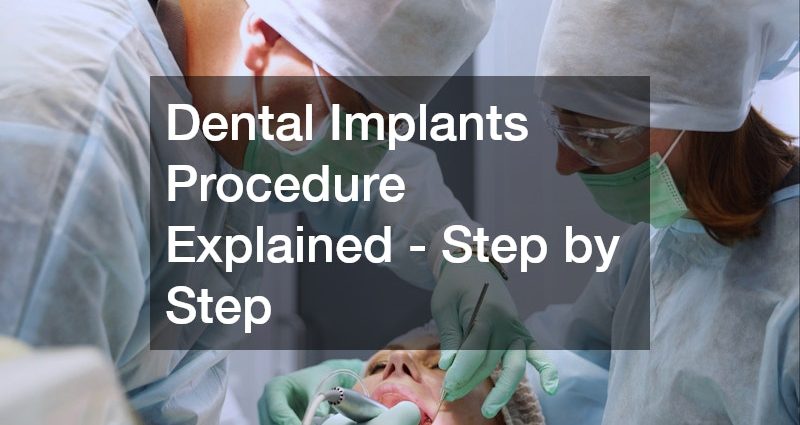
Dental health is a critical aspect of overall well-being, and missing teeth can affect not only your smile but also your confidence and oral functionality. One of the most reliable and long-lasting solutions for tooth loss is dental implants. These restorations not only restore the natural appearance of your teeth but also improve chewing, speaking, and overall oral health.
At Foothill Modern Dental, patients can expect a seamless experience from consultation to recovery, making dental implants an accessible and effective solution for anyone seeking a permanent tooth replacement.
What is the Dental Implant Procedure?
Dental implants are titanium posts surgically placed into the jawbone to serve as artificial tooth roots. Once integrated, they provide a strong foundation for crowns, bridges, or dentures, mimicking the stability and functionality of natural teeth. The procedure involves several stages, including initial consultation, surgical placement, and post-operative recovery. Understanding each step can help patients feel more prepared and confident throughout the treatment.
At Foothill Modern Dental, the dental implant procedure is customized to each patient’s unique oral anatomy and goals, ensuring the best possible outcome.
Initial Consultation and Planning
The first step in receiving dental implants is a thorough consultation with a qualified dentist. During this stage, the dental team will conduct a comprehensive evaluation of your oral health, which may include:
- Dental imaging, such as X-rays or 3D scans, is used to assess bone structure
- Examination of gums and surrounding teeth
- Discussion of medical history and potential risk factors
At Foothill Modern Dental, this planning phase is essential to ensure that implants are positioned accurately for optimal function and aesthetics. Dentists will also discuss the types of implants available, the number of teeth being replaced, and any preparatory procedures, such as bone grafting, that may be required.
Surgical Procedure
Once a treatment plan is in place, the surgical phase of dental implants begins. This step involves placing a titanium post into the jawbone, which acts as the root for the replacement tooth. Here’s what patients can expect:
- Local or general anesthesia is used to ensure comfort during surgery.
- A small incision is made in the gum to expose the jawbone.
- The dental implant is inserted into the bone, and the gum is sutured back over the site.
- In some cases, a temporary crown or healing cap may be placed.
The precision of the surgical placement is critical for long-term success, and Foothill Modern Dental prides itself on utilizing advanced imaging and techniques to achieve predictable and reliable results.
Post-Surgery Recovery and Care
Recovery after dental implant surgery is a gradual process, typically spanning several months. The initial healing phase involves the integration of the implant with the jawbone, a process called osseointegration. During recovery, patients should follow specific care instructions, including:
- Eating soft foods and avoiding pressure on the surgical site
- Maintaining excellent oral hygiene while being gentle around the implant area
- Attending follow-up appointments to monitor healing progress
- Managing any discomfort with prescribed medications or over-the-counter pain relievers
Some minor swelling, bruising, or soreness is normal during the first few days. With proper care and guidance from the team at Foothill Modern Dental, most patients experience a smooth recovery and successful implant integration.
How Long Does a Dental Implant Procedure Take?
The timeline for dental implants varies depending on individual circumstances. Generally, the process can take several months, including:
- Preparation and planning: 1–2 weeks
- Surgical placement of the implant: 1–2 hours per implant
- Healing and osseointegration: 3–6 months
- Final crown placement: 1–2 appointments
Factors that can affect the duration include bone density, the need for additional procedures like bone grafting, and individual healing rates. Foothill Modern Dental ensures that each phase is carefully coordinated for efficiency without compromising safety or effectiveness.
What is the Success Rate and Risk Involved in Dental Implants?
Dental implants boast a high success rate, with studies showing approximately 95–98% of implants lasting 10 years or more when placed by experienced professionals. However, like any surgical procedure, there are potential risks, including:
- Infection at the implant site
- Damage to surrounding teeth or nerves
- Implant failure due to insufficient bone integration
- Complications from pre-existing health conditions
Maintaining good oral hygiene, attending follow-up visits, and following post-operative instructions significantly reduces the risk of complications. At Foothill Modern Dental, the emphasis on patient education, advanced surgical techniques, and careful monitoring ensures that risks are minimized and outcomes are highly successful.
Conclusion
Dental implants are a transformative solution for missing teeth, offering improved appearance, function, and oral health. By understanding the dental implant procedure—from consultation and surgical placement to recovery and long-term care—patients can make informed decisions about their treatment.
At Foothill Modern Dental, personalized care and state-of-the-art techniques make the dental implant journey comfortable, safe, and highly effective. If you are considering dental implants, scheduling a consultation with our expert team is the first step toward restoring your smile and confidence.


